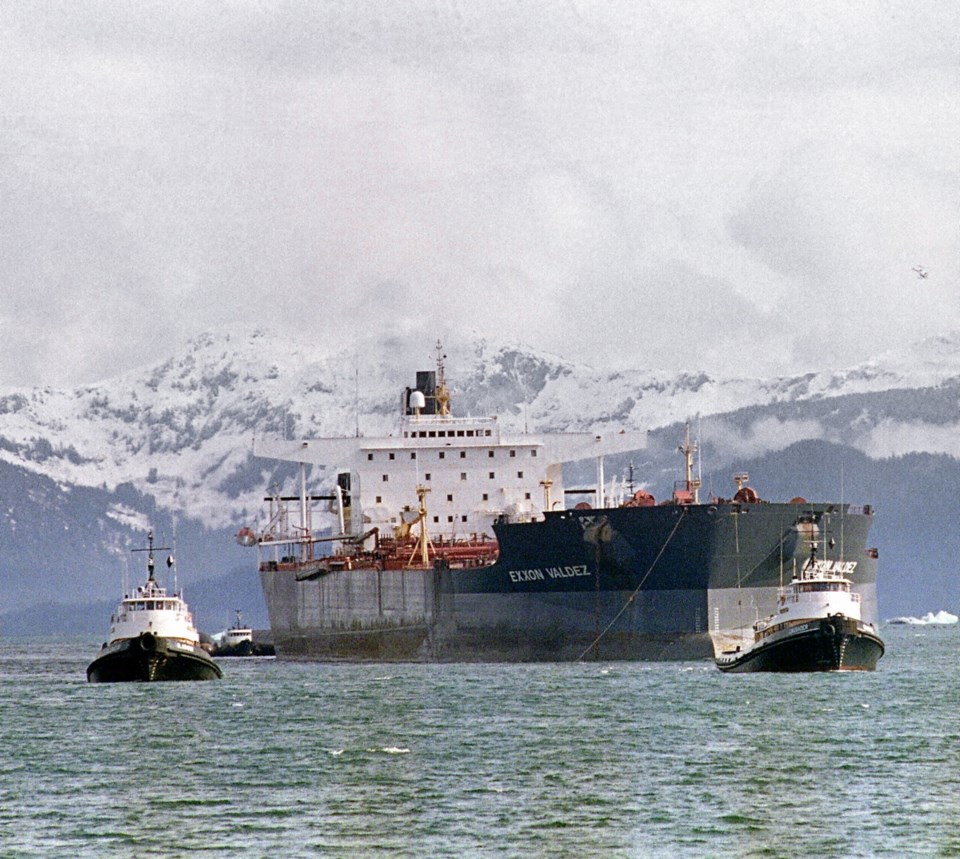OTTAWA ŌĆö The Harper government will announce Monday in 91įŁ┤┤ plans to create what it calls a ŌĆ£world-classŌĆØ oil spill prevention regime, the 91įŁ┤┤ Sun is reporting.
The announcement is in response to public opinion concerns which last summer prompted B.C. Premier Christy Clark to issue five key demands ŌĆö including improved tanker safety ŌĆö that she says must be met before the provincial government will agree to allow oilsands pipelines to the West Coast.
A senior federal source said Sunday the announcement is a response to British ColumbiaŌĆÖs concerns, noting that the Harper government also included pipeline safety measures in last springŌĆÖs budget.
Ottawa is committed to developing a world-class system to address tanker safety in Canada, particularly off the West Coast, he said.
Natural Resources Minister Joe Oliver and Transport Minister Denis Lebel will be in B.C. to provide details of a long-term funding commitment to the National Aerial Surveillance Program, first established in 1991, as well as new funding measures to ŌĆ£enhanceŌĆØ the programŌĆÖs coverage, especially along the northern B.C. coast.
The ministers will also announce a more rigorous tanker inspection program as well as the creation of a ŌĆ£Tanker Safety Expert Panel.ŌĆØ
The Harper government has made no secret that one of its top priorities is to ensure that CanadaŌĆÖs oilsands sector has access to Asian markets for AlbertaŌĆÖs diluted bitumen crude.
But two proposals to accomplish that objective ŌĆö EnbridgeŌĆÖs Northern Gateway pipeline project to Kitimat, and Kinder MorganŌĆÖs plan to twin its existing pipeline from the Edmonton area to Burnaby ŌĆö have been hugely controversial.
One of the key public worries is the risk of a major oil spill.
Clark, viewed as somewhat more open to oilsands pipelines than New Democratic Party leader Adrian Dix, announced last summer five conditions that would have to be met before her government would approve such a project.
She said any oilsands pipeline must successfully complete an environmental assessment, and ŌĆ£world-leadingŌĆØ spill monitoring systems must be set up both along the coast and on the land around the pipeline route.
First Nations rights and concerns must also be addressed and B.C. must get a ŌĆ£fair shareŌĆØ of the wealth generated by the project, Clark said.
MondayŌĆÖs announcement is aimed at public concerns about the risk of a spill similar to the 1989 Exxon Valdez disaster off the Alaskan coast.
The federal source noted that Canada already has a strong spill prevention system and has never experienced a major incident.
However, it can always be better, he said.
A key component of the strategy is to ŌĆ£enhanceŌĆØ the National Aerial Surveillance Program, which has three aircraft ŌĆö including one in 91įŁ┤┤ ŌĆö engaged in monitoring shipping activities and watching for illegal discharges.
The ministers will also announce changes to the existing tanker inspection system. All 91įŁ┤┤ tankers are now inspected manually, while foreign-flagged vessels are inspected on their first visit and then subjected to follow-ups for tankers who come regularly to Canada.
From now on, all foreign vessels will get the same treatment as 91įŁ┤┤ ships, with required annual inspections.
The final component is the creation of a Tanker Safety Expert Panel that will be asked to review the current system and come up with new suggestions to ensure Canada meets the ŌĆ£world classŌĆØ test.
One Dash-8 airplane is on each coast, one in 91įŁ┤┤ and the other in Moncton, N.B., while a Dash-7 is based mainly in Ottawa but is deployed in Iqaluit, Nunavut, during the Arctic shipping season.
The federal government also contracts other aircraft when needed.
The National Aerial Surveillance Program, according to the official, has had significant success in laying charges against polluters and reducing pollution incidents, according to the official.
In 2011-12, National Aerial Surveillance Program pilots flew 2,064 patrol hours, tracking 73,315 vessels and detecting 135 pollution incidents.
It works closely with Environment CanadaŌĆÖs Integrated Satellite Tracking of Pollution program, which operates as the governmentŌĆÖs early-warning system to detect anomalies on the ocean surface that may have been caused by a spill.



